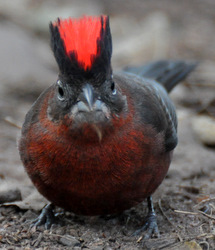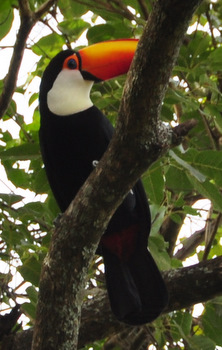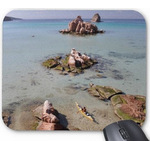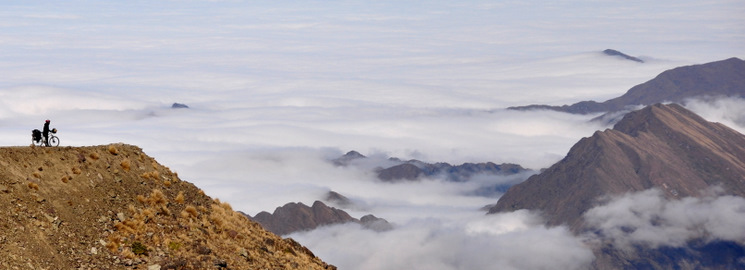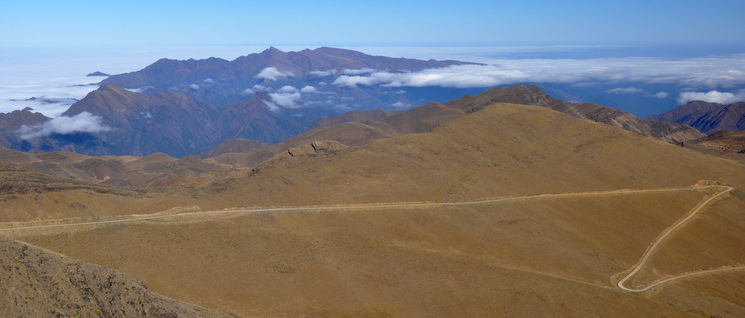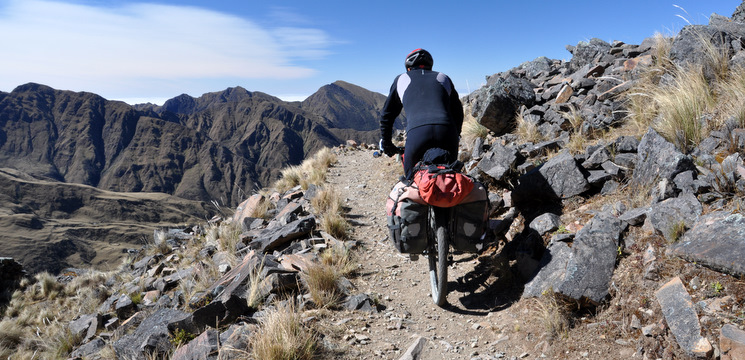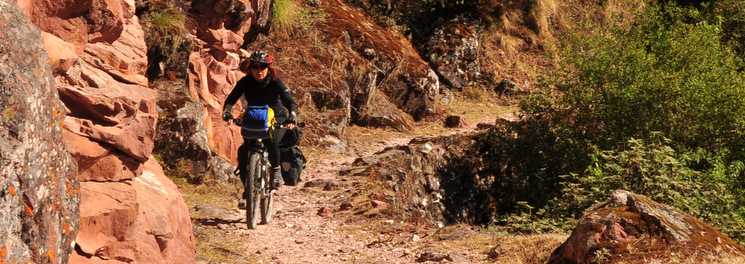• Logbook
• Road Stars
Photo album:
• From Humahuaca to Calilegua NP
Lodging and eating:
• Hospedaje Portal de las Yungas (03887) 462001 (Santa Ana)
• Tía Carola Restaurant (San Francisco)
Download GPS files for Quebrada de Humahuaca:
• GPS track & waypoints
On most maps of the area there is no connection between Humahuaca and the Calilegua National Park. The truth is that there is a track for vehicles from Humahuaca to Santa Ana and another between the park and Valle Colorado, but between Santa Ana and Valle Colorado there is no road for cars. And no wonder, because the terrain makes it almost impossible to build one. However, the Incas did have their way to get from the Andean highlands to the Yungas. Today, villagers still use some of it to move around. We pedaled through the vehicle tracks and push the bikes along the Inca and other trails on the edge of a cliff to complete a journey through various natural ecosystems, different indigenous groups and a series of experiences not easily forgotten. Here is the story of this journey.
Stage index:
June 29, 2011: From Humahuaca to Cianzo (Profile)
June 30, 2011: From Cianzo to 14500 feet (Profile)
July 1, 2011: From 14500 feet to Santa Ana (Profile)
July 2, 2011: From Santa Ana to Valle Grande (From the Puna to the Yungas) (Profile)
July 3, 2011: From Valle Grande to San Francisco (Profile)
July 4, 2011: From San Francisco to Calilegua National Park (Profile)
July 5, 2011: From Calilegua National Park to Jujuy (Profile)
Profile for the entire stage:
June 29, 2011: From Humahuaca to Cianzo

At mile 6 the slope increases to an 8% and continues so until mile 12.5. As if the slope was not enough, the elevation puts our endurance to test. Today we started at 10000 feet and the pass before us is at 14000 feet. We’ve been riding one behind the other without speaking for a while now. We can’t skip a breath. Beyond the 12500 feet, the breaks become more frequent. Fortunately, the terrain is now more compact, probably because here the vehicles run more slowly due to the slope and the lack of oxygen for the engine combustion. From time to time a truck passes us crawling uphill.
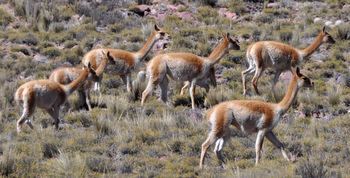
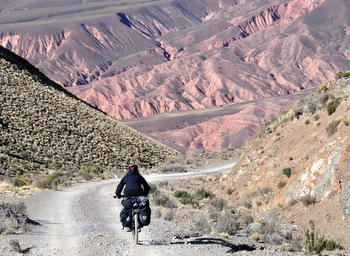
At Cianzo, we refill the water bottles at a private home and continue in search of a campsite. A few miles from town we find a suitable location by the river bank and outside the fences enclosing the fields and pastures. It is a small space surrounded by bushes but enough for our tent. A few yards away there is a shepherd with his flock of sheep. We set up the tent and approach him to make sure we are not bothering him. The man is a sullen and moody type that barely responds to our greeting. It is true that we have already set up the tent, but it´s outside his field. His only comment beyond a grunt is: “I´ll be back later to burn it all”. And with no further reasoning, he goes away with his herd. The sun has already set behind the ridge and the cold is really biting us now. There we stay not knowing what to do. At the end we decide to pick up the tent, but don´t know whether to go back to Cianzo or ride ahead far away enough from the arsonist of the valley. A minute later, a local riding a bicycle passes by towards the village. We intercept him and explain what just happened and he suggests we ask for permission to sleep in the school at the village. It seems a perfect alternative and the three of us pedal back to Cianzo. Once at the school, everything becomes easy as they allow us to set up the tent in a room. Tonight we sleep under 2 roofs and away from the crazy old man. The only little problem is that students arrive tomorrow around 8:15 and by then we have to be out. Out probably means outside. We don´t think the sun will be high enough to reach the valley by then. The teachers make sure we know it´s going to be a cold night. To make sure we understand, they show us how stiff the clothes drying on a string are. The frozen sleeves refuse to follow the law of gravity. Anyway, for us is a great solution compared with being charred at midnight.
June 30, 2011: From Cianzo to 14500 feet
Today we get up earlier than usual, as the children enter the school about 8:15. When the first ones show up we have everything cleared out, but the bikes spark their curiosity. However, they are too shy to ask. While chatting with some of the teachers the sun line on the western slopes of the valley keeps going down. The school has 50 students and 7 teachers, some of them for special subjects such as agricultural techniques, music and visual arts. At 9 am they all hoist the flag while singing the national anthem. After that, we take some pictures, say goodbye and set off.
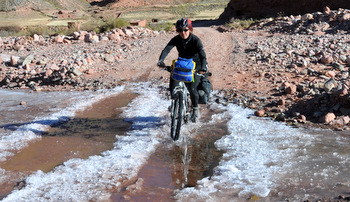
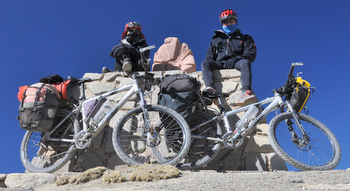
July 1, 2011: From 14500 feet to Santa Ana
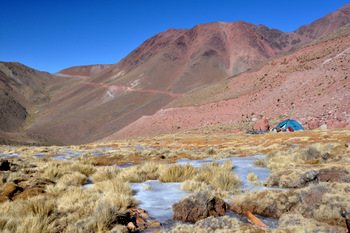
The wind has been blowing all night and still continues. At 11:30 we're ready to get back on the road and resume our route. Although the temperature doesn’t feel that low in the sun, the wind is biting cold. Supposedly, all of Argentina is affected by a polar front. The strange thing is that here the wind comes predominantly from the North. Today we start going down the dirt road about 600 feet to the valley floor, where the climb starts towards the next pass. When we reach the bottom of the valley we have to stop because we don’t feel our fingers, especially me. The best way we can think of to warm them up is to place them in the groins, of course, inside the clothes. In my case my balls flee inside my body with a plop-plop I never experienced before. Thinking about this and the small size their mate had this morning during the first pee of the day, I believe I'm becoming an angel. After a couple of minutes, it seems that my fingers come back to life because they hurt a lot. We believe I’m going into an onset of hypothermia, because I feel like I need more air and start shaking. Judit hugs me tightly and rubs my back and I seem to start recovering. Luckily no one is witnessing the scene because you can imagine Judit hugging me while I breathe arrhythmic with both hands on my balls. Once this first crisis is over, we start the climb. A short while after is Judit who loses her fingers. She uses the same technique, but unfortunately she misses the double plop. I did not miss the opportunity and repeat the exercise. Now it’s the two of us huddled on the floor with both hands in our groins (respectively). This scene is repeated throughout the day several times. I have to publicly thank my balls that every time I needed them, they have been there and although they tried to slip away once, they have saved my fingers.
Completed the first pass of the day (15000 feet), begins a slight descent around the summit to show us the road going up again, but gently this time. The main problem here is not the steepness but the poor condition of the track, the cold wind and the altitude. Having to dodge the stones and, above all, to go over them while climbing involves a considerable effort. However, the vizcachas we see run and jump over the boulders just for fun. Around mile 8 begins the climb to the third pass of the day. This one is also above the 15000 feet. We have been riding for more than 6 mi above 14700 feet. The view is simply superb. The mountains around us seem to never end. A few hundred yards below us a sea of clouds expands to the infinity. In the distance, towards the Atlantic, where the peaks are lower, just a few mountains peek through the clouds. In the closest area to us, the steep and twisting canyons are still above the clouds.
From mile 9.4, the track goes down continuously and the best of all is that on this side of the hill there is less wind so we can move quickly. Except for a couple of small climbs, we descend 4250 feet till Santa Ana, our destination for today. Excluding those climbs, it’s 12.5 miles downhill. On top of this, the terrain has improved a lot and our speed is only limited by our fear. The hillsides are not vertical, but quite steep and, above all, very long. If we miss a turn, it will take a long time to stop. So, from time to time, we stop to rejoice with the views without any rush.
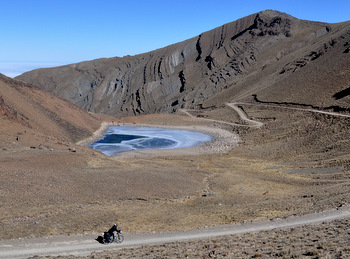
July 2, 2011: From Santa Ana to Valle Grande (From the Puna to the Yungas)
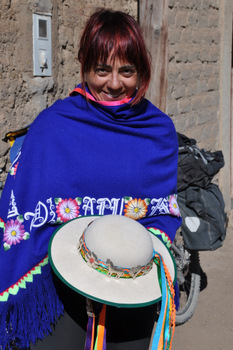
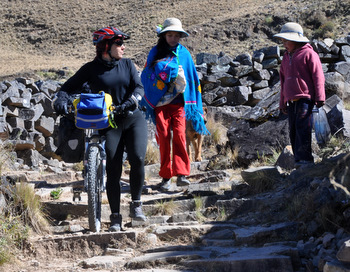
As we lose elevation, the first shrubs begin to appear, then the first trees. Gradually the landscape changes and the aridity of the Andean highlands transforms into an impenetrable forests that clings to the very steep slopes. At the end of the dirt road we carefully follow Aldo’s map to find the beginning of the path that will lead us to Valle Colorado where the road to Valle Grande and the Calilegua National Park starts. This is the critical point of the route, but with Aldo’s sketch we have no problem recognizing it. So far, we have gone down 2300 feet from the Abra del Valle and still have 2600 more to Valle Colorado. The path descends relentlessly following the intricate geography of the area. In several sections we have to walk, either because of the rocky terrain or for the fear to fall off the cliff to our left.
Half way down on the trail there is a gate where we stop to eat. We are in the transition zone. We look back to say goodbye to the barren summits of the puna; in front of us the lush forests of the Yungas are waiting. The gate has probably been installed by a shepherd of Colorado Valley, tired of having to climb looking for his animals. Indeed, after a few switchbacks we find a horse and a donkey going up the trail. The path is too narrow to cross, and taking advantage of being the dominant species, we force them go down. From time to time they stop and look back to see if we are still chasing them. As we get closer, they bray and neigh in sign of disapproval but trot again down the trail. And so we continue chasing them riding and walking the bikes, losing elevation through a scenery where it would be very scary to get lost. After a few miles, ahead of us, there is a hillside that has collapsed, leaving the red dirt exposed and this gives us a clue that we're getting back to civilization: Valle Colorado. Soon, we find the first section of the path more than 6 feet wide in the last 4 miles and the poor animals flee to the side to resume their climb.
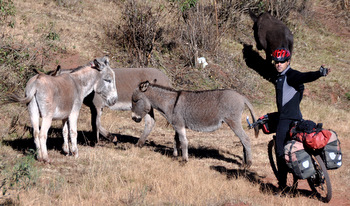
Seven miles downstream we arrive to Valle Grande, where we look for accommodation. Around 7:30 PM, while preparing dinner in our room, church services begin. We know because the priest and the altar boy repeat each other in praise of the Virgin and petitions for mercy to sinners through the loudspeakers installed in the bell tower. It seems that in Valle Grande you go to Mass you want it or not. The situation fits best the stereotype of the muezzin reciting Koranic verses from atop the minaret of a mosque. Occasionally some screams of excitement due to the Copa America football match (which began yesterday) mix with the prayers. If the priest hears them... We go to sleep when the usual barking dogs evening concert has already started. Today at least there is an invited guest, a donkey braying in synch. We switch off the light remembering how yesterday we were riding the sky and realizing that today we have landed in paradise.
July 3, 2011: From Valle Grande to San Francisco
At 10 o’clock, the priest attacks again with his loudspeakers system. Today is Sunday and he uses it to call the boys and girls preparing for communion for the study session. When we are a couple of miles from Valle Grande, we can still hear the religious music for young people.

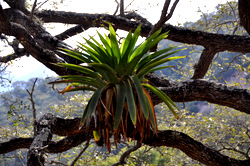
Although we are only 5000 meters above sea level, the polar front keeps temperatures slightly above 32 degrees. Only at noon, when the clouds fade away and the wind stops blowing, the sun pleasantly warms us. Today we have to change long and shorts gloves several times depending on whether we descend or climb.

July 4, 2011: From San Francisco to Calilegua National Park
Today we wake up to the sound of chacareras, one of the traditional folk tunes of Northwest Argentina. El Negrito Palma signs his passionate love misadventures accompanied by an andean guitar and a violin. Construction work at the hostel starts at 8 and Roberto doesn’t know we are sleeping upstairs. Nevertheless, the GPS alarm clock had just beeped. While having breakfast and preparing the panniers, Roberto repeats the cassette tape several times. We already know the songs by heart.
When we leave San Francisco the sky is still overcast and will continue like that throughout most of the day. The climb to the Abra de Cañas, Calilegua National Park boundary, is smooth but it takes us more time than we expected. Partly because of the cold (we don’t think it’s more than 50 degrees), but perhaps also for the lack of vitamins due to the reduced variety in our diet. The landscape we ride through is transitioning into the rainforest. Ferns and mosses start to be common and the humidity is increasing. From the pass we can see countless deep valleys with hillsides completely covered by vegetation, no matter how steep they are.
Upon entering the park, the downhill that will take us to the campsite to the east entrance begins. Shortly after we start going down, we stop to put some layers on as the speed increases the chill factor. As we go down the disappointment keeps growing. We expected to see more wildlife, at least birds and we've only seen a couple of species. Along the way we pass the ranger at la Mesada de las Colmenas. He gives us a trail brochure, a guide to recognize footprints of mammals and a tree catalog of the park. He also admits that it is difficult to see wildlife in Calilegua. According to him, in the Parque Nacional El Rey, an ecosystem similar to Calilegua, is easier to see animals.


July 5, 2011: From Calilegua National Park to Jujuy
